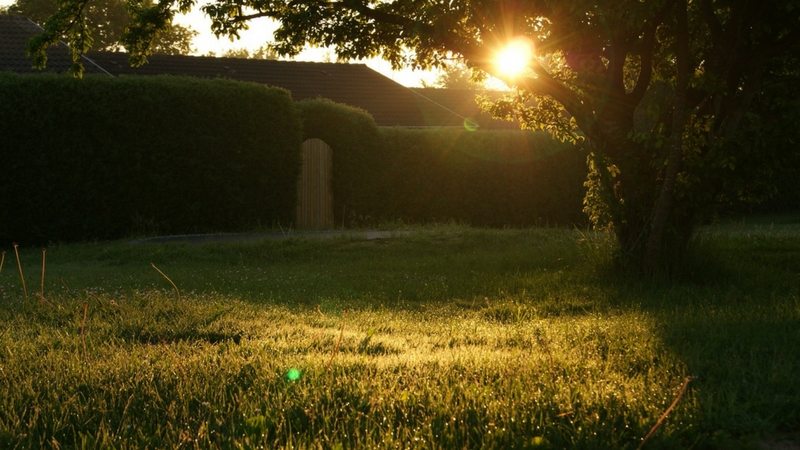Choosing a Site
Episode #2 of the course Small-scale gardening by Alice Morgan
Good morning! After yesterday’s lesson, you should have some idea of what kind of garden best fits your needs. With this information in mind, let’s look at how to plan a garden based on location.
Making a Map of Your Area
The first step of selecting a site for your new garden is to create a map of the area surrounding your property. Grab a piece of paper and a pencil, and create a rough sketch of all the key features in your immediate area. Important physical details include: fences, sidewalks, patios and decks, electric, water, and sewage lines, or any other notable object you want to take into consideration. You’ll still want to make a site map even if you plan to do all your gardening with containers of your deck or inside your house. Instead of outdoor features, focus on the layout of the rooms and windows of your home.
Sunlight
Sunlight is one of the most important factors to take into consideration when planning your garden. Light will limit the types and productivity of the plants in your garden. Choose a bright, clear day for your observation, and take notes of all the places in your yard where the sun hits for the majority of the day. Remember that sunlight will change depending on season. Full sun exposure is six or more hours of direct sunlight per day and is ideal for many vegetables, herbs, and flowers. Partial Sun or Shade means that the area receives three to six hours of light a day. Areas with this light designation can still be used for a variety of plants. Full Shade means fewer than three hours. They work well for ornamental gardens but not as well for vegetables.
Proximity to House and Water
Besides sunlight, proximity to your home and a water source are the next attributes on your map to consider. Good gardens require time and work to flourish, but there’s no need to make extra work lugging water farther than you need to! Place your garden as close as you can to your home and water source.
Soil
Making a map of your soil consists of several factors. First, you’re going to want to find as flat a space as possible for your garden. Sloping ground can lead to erosion problems. If all you have is a slope to work with, you should consider terracing the area to keep erosion under control.
Richness is the other soil factor. Rich soil is full of the delicious, nutrient-dense organic matter that plants love. You can get your soil tested to find out the numeric quantity of minerals, or you can grab a shovel and go on an earthworm hunt. Don’t be discouraged if your soil isn’t as rich as you might want. Unless they’ve had a gardener looking after them who’s been continually building up the soil, most urban and suburban plots have low-quality earth.
Lastly, you should strongly consider testing your soil for arsenic or lead if you live in an urban or industrial environment and want to grow edible plants. Vegetables, fruits, and berries grown in contaminated soil contain trace amounts of these elements.
Size
When thinking about size, remember that a bigger garden will mean more time and work with larger produce yields, and smaller gardens will take less effort and create smaller amounts of produce. I recommend that you take a longer term strategy when planning your garden. Create one smaller garden plot in your first year, and then plan expansions in later years as you gain knowledge, skills, and desire for more plants. One hundred square feet is great size to start with.
Finally, I want you to look into the future and think about the garden you want to have in one, three, and five years. If you’re in an apartment, you can think about putting in grow lights or giving vertical gardening a try. Don’t worry if it feels overwhelming. Your plan is only as permanent as you want. Tomorrow, we’ll start to dig in deeper with how to build healthy soil.
Recommended book
High-Yield Vegetable Gardening by Colin McCrate and Brad Halm
Share with friends

